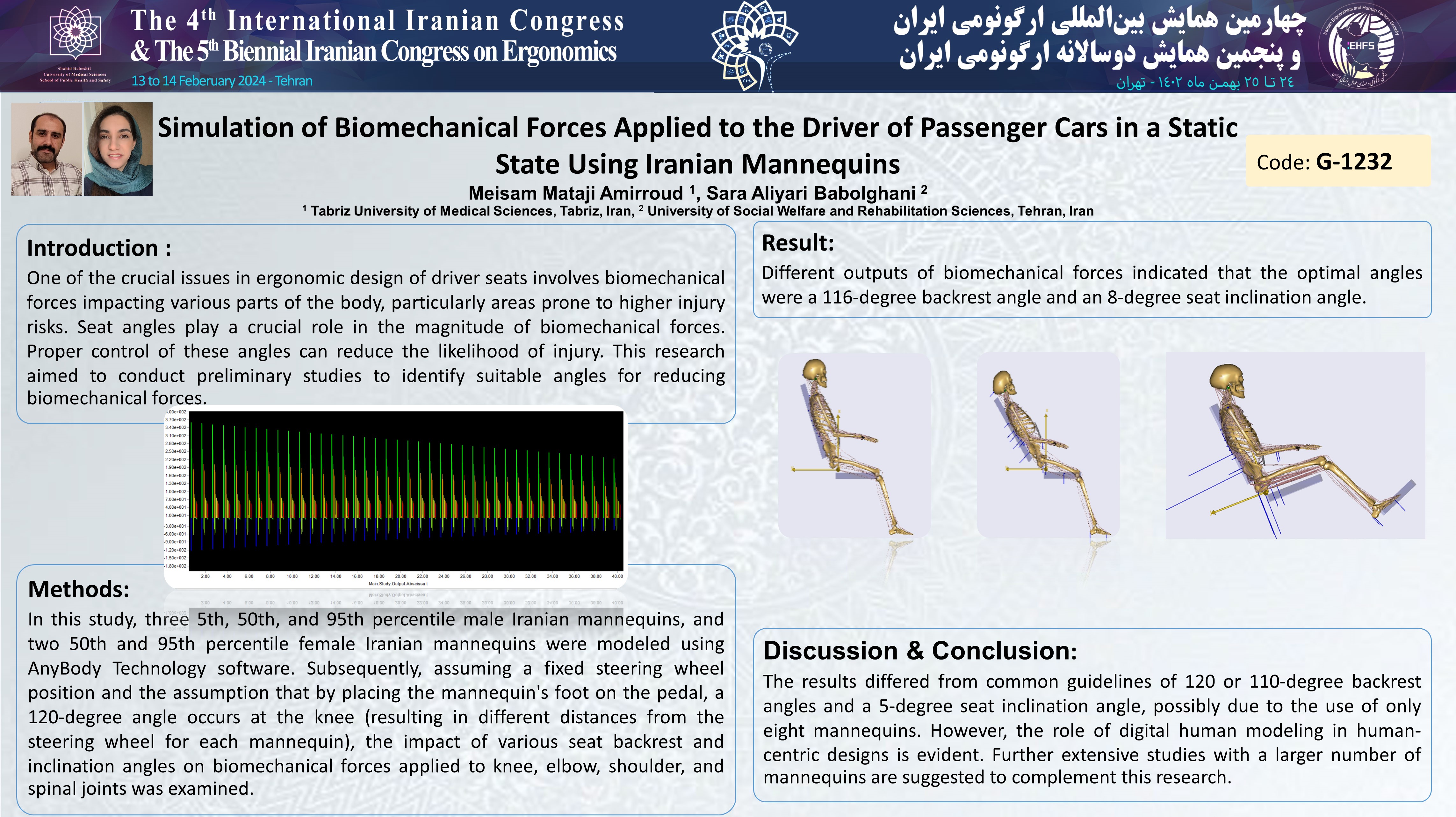Simulation of Biomechanical Forces Applied to the Driver of Passenger Cars in a Static State Using Iranian Mannequins
Code: G-1232
Authors: Meisam Mataji Amirroud © ℗, Sara Aliyari Babolghani
Schedule: Not Scheduled!
Download: Download Poster
Abstract:
Introduction
One of the crucial issues in ergonomic design of driver seats involves biomechanical forces impacting various parts of the body, particularly areas prone to higher injury risks. Seat angles play a crucial role in the magnitude of biomechanical forces. Proper control of these angles can reduce the likelihood of injury. This research aimed to conduct preliminary studies to identify suitable angles for reducing biomechanical forces.
Methods and Materials / Case Report
In this study, three 5th, 50th, and 95th percentile male Iranian mannequins, and two 50th and 95th percentile female Iranian mannequins were modeled using AnyBody Technology software. Subsequently, assuming a fixed steering wheel position and the assumption that by placing the mannequin's foot on the pedal, a 120-degree angle occurs at the knee (resulting in different distances from the steering wheel for each mannequin), the impact of various seat backrest and inclination angles on biomechanical forces applied to knee, elbow, shoulder, and spinal joints was examined.
Results
Different outputs of biomechanical forces indicated that the optimal angles were a 116-degree backrest angle and an 8-degree seat inclination angle.
Conclusion
The results differed from common guidelines of 120 or 110-degree backrest angles and a 5-degree seat inclination angle, possibly due to the use of only eight mannequins. However, the role of digital human modeling in human-centric designs is evident. Further extensive studies with a larger number of mannequins are suggested to complement this research.
Key Words
Design, Ergonomics, Driver Seat, Biomechanics, AnyBody Software, Seat Angle
Comments (0)
Post a comment
Post comment is closed by admin.
